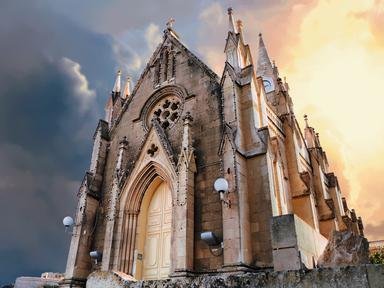Quiz Answer Key and Fun Facts
1. Holy Monday immediately follows what other holy day?
2. In the Western church, Holy Monday is the second day of Holy Week. What is it in the Eastern Orthodox church?
3. Holy Monday commemorates several events. One such event is Jesus cursing a tree for not bearing fruit. What tree did Jesus curse?
4. Among other things, Holy Monday commemorates the cleansing of the temple. During the cleansing of the temple, in Matthew, Jesus overthrew the tables of the money changers and the seats of those who sold what?
5. According to tradition, it was on Holy Monday that Jesus's authority was questioned by the chief priests and elders, who asked, "By what authority doest thou these things?" How did Jesus reply?
6. Another event associated with Holy Monday in some Christian traditions is the anointing of the feet of Jesus with pure nard (an expensive perfume) while he was at a dinner in Bethany. In the Gospel of John, who did this anointing?
7. In the Orthodox church, an icon of "Christ the Bridegroom" is placed on a stand in the center of the temple on Holy Monday. How does it depict Christ?
8. Because Jesus was anointed on Holy Monday, one popular hymn for the day in some churches is "Hail to the Lord's Anointed". What Scottish-born son of a Moravian minister wrote this song?
9. In the Orthodox church, Holy Monday is often called Clean Monday.
10. One painting appropriate for Holy Monday is "Christ Driving the Money Changers from the Temple", which was painted in 1600. Who painted it?
Source: Author
skylarb
This quiz was reviewed by FunTrivia editor
looney_tunes before going online.
Any errors found in FunTrivia content are routinely corrected through our feedback system.

